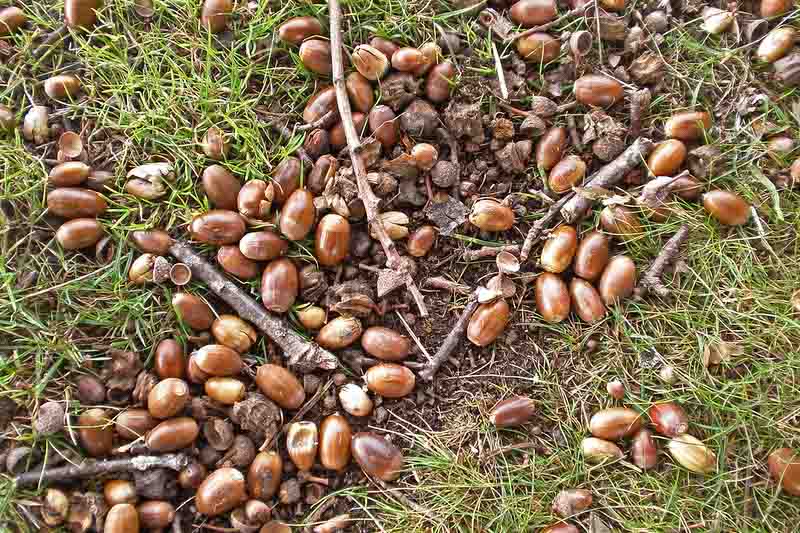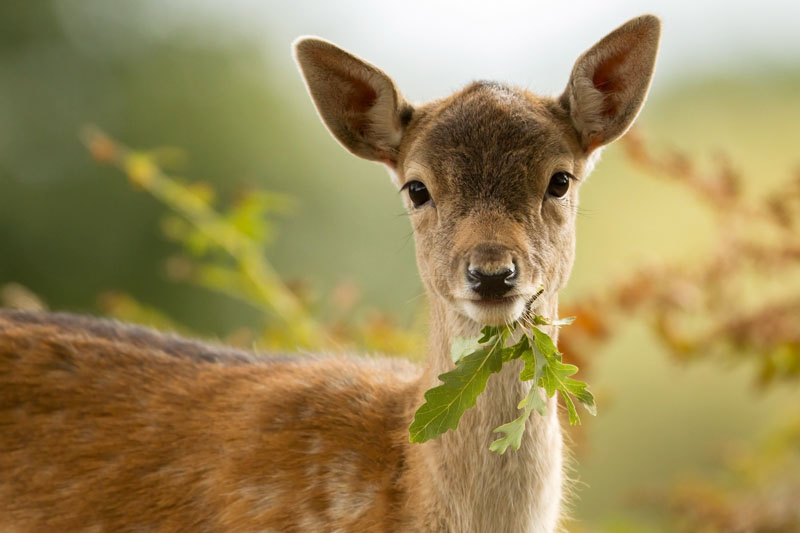Your Step-by-Step Journey to Growing Majestic Oaks from Tiny Acorns
Planting and growing an oak tree from an acorn is a rewarding process that connects you with nature and provides a legacy for future generations.
Oak trees, part of the Quercus genus, are known for their strength and longevity. With over 600 species, oaks are native to various parts of the Northern Hemisphere. Each species has distinct characteristics, but most share common traits like lobed leaves, sturdy trunks, and the production of acorns. These trees play a vital role in ecosystems, supporting wildlife and contributing to biodiversity. Discover eight compelling reasons to grow an oak tree.
Choosing the right acorns is a critical step in successfully growing oak trees. The quality and health of the acorns significantly influence the germination rate and the health of the future sapling.
Timing of Collection: The best time to collect acorns is in early to mid-autumn, shortly after they’ve fallen from the tree. This timing ensures the acorns are fresh and haven’t been exposed to damaging elements or predators for too long. Fresh acorns have a higher chance of successful germination.
Identifying Healthy Acorns: Look for acorns that are intact, firm, and free from cracks, holes, or signs of rot. A healthy acorn typically has a smooth, unblemished surface. Avoid acorns with any signs of insect holes, as this indicates they have been infested and are unlikely to germinate.
Research local oak species to understand their specific requirements. Using native species is often recommended as they are adapted to the local climate and soil conditions. Find the perfect native oak tree for your landscape.

To test if acorns are viable, perform a water test. Fill a container with water and place the acorns in it. Viable acorns will sink to the bottom, while non-viable ones will float. Discard the floaters, as they are less likely to germinate. This simple test increases your chances of successful growth.
Some Oak species have acorns that germinate immediately, while others require a period of dormancy. The immediate germinators often do not require cold stratification and will start to sprout soon after falling off the tree. In contrast, those requiring dormancy will need to be exposed to cold temperatures (stratification) for a certain period, mimicking winter conditions, before they can germinate in the spring.
Moisture Preparation: After selecting viable acorns, prepare a moist medium for stratification. This can be done using sphagnum peat moss, sand, or vermiculite. Moisten the medium so that it is damp but not waterlogged.
Bagging the Acorns: Place the acorns in a sealable plastic bag with the moist medium. The bag should be large enough to hold the acorns and medium without crowding them. Ensure there’s enough air in the bag for the acorns to breathe.
Refrigeration: Place the bagged acorns in the refrigerator, not the freezer. The temperature should be between 34°F and 41°F (1°C to 5°C). This simulates the winter conditions, breaking the seed’s dormancy.
Duration of Stratification: The stratification period varies depending on the oak species but typically ranges from 1 to 3 months. Check the specific requirements for the species you’re working with.
Regular Checks: Check the bag periodically. The medium should remain moist throughout the stratification period. Look out for any signs of mold or rot and remove any affected acorns.
Beginning of Germination: Towards the end of the stratification period, you might start to see some acorns sprouting or swelling. This is a sign that they are ready to be planted.
Young Canyon Live Oak Tree – Quercus chrysolepis
After stratification, plant your acorns in well-draining soil. You can start them in pots or plant them directly in the ground. If using pots, choose containers deep enough to accommodate the growing taproot. Fill these with good-quality potting soil. Plant the acorns 1-2 inches (2-5 cm) deep, with the pointed end facing down. Water them thoroughly after planting. Safeguard them from squirrels, mice, or chipmunks until the plant grows well beyond the soil surface.
If planting directly outdoors, choose a location with enough space for the mature oak tree. Consider the full-grown size of the tree, including its height and canopy spread. Oak trees prefer sunny locations with well-draining soil.

Once the acorns sprout, ensure they receive adequate water and sunlight. In pots, water when the top inch of soil feels dry. In the ground, water deeply but infrequently to promote strong root growth. Protect young saplings from wildlife and extreme weather. Do not fertilize your oak. Oaks thrive in nitrogen-poor soils, and applying fertilizer can cause sudden growth spurts, leading to bark splitting or lush foliage growth, which may become more susceptible to insect attacks.
If you started your oak in a pot, transplant it to a permanent location once it outgrows the container or reaches about 1-2 feet (30-60 cm) in height. Carefully remove the sapling to avoid damaging the taproot. Dig a hole as deep as the root ball and twice as wide, then place the sapling in the hole and backfill it with soil. Make sure you do not bury your tree below its root line – a leading cause of transplant failure.
With their delicate structure, young oak trees are a favored food source for many herbivores. Rabbits, deer, and other leaf-eating animals pose a threat to small seedlings.
To safeguard your young oaks, consider enclosing them with chicken wire or durable plastic fencing around the trunk, preventing animal access.
Extending the protective caging to the tree’s upper parts might be necessary in regions with prevalent deer.

As your oak tree grows, it will require less care. Regularly check for pests or diseases and prune any dead or damaged branches. Mulching around the base can help retain moisture and suppress weeds. Mature oak trees are resilient and can withstand varying conditions, but continue to monitor their health.
Growing an oak tree from an acorn is a fulfilling journey. Over the years, you’ll witness the transformation from a small acorn to a mighty oak. This tree will become a habitat for wildlife, a source of beauty, and a testament to your contribution to the environment. It’s a legacy that can stand for centuries, providing benefits to both nature and future generations.
McBaine Burr Oak – Quercus macrocarpa, estimated to be between 350 and 400 years old.
Create a membership account to save your garden designs and to view them on any device.
Becoming a contributing member of Gardenia is easy and can be done in just a few minutes. If you provide us with your name, email address and the payment of a modest $25 annual membership fee, you will become a full member, enabling you to design and save up to 25 of your garden design ideas.
Join now and start creating your dream garden!
Create a membership account to save your garden designs and to view them on any device.
Becoming a contributing member of Gardenia is easy and can be done in just a few minutes. If you provide us with your name, email address and the payment of a modest $25 annual membership fee, you will become a full member, enabling you to design and save up to 25 of your garden design ideas.
Join now and start creating your dream garden!